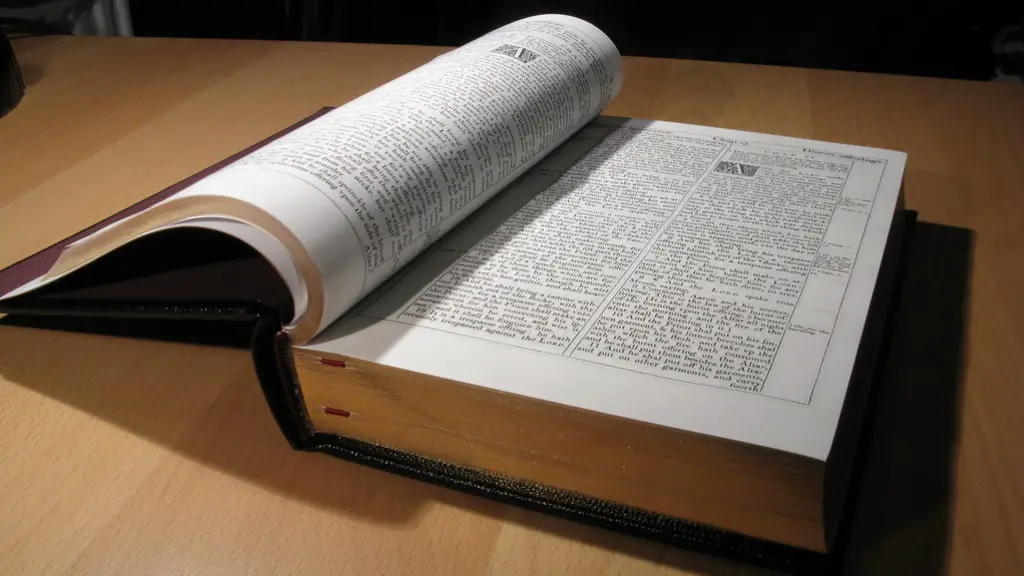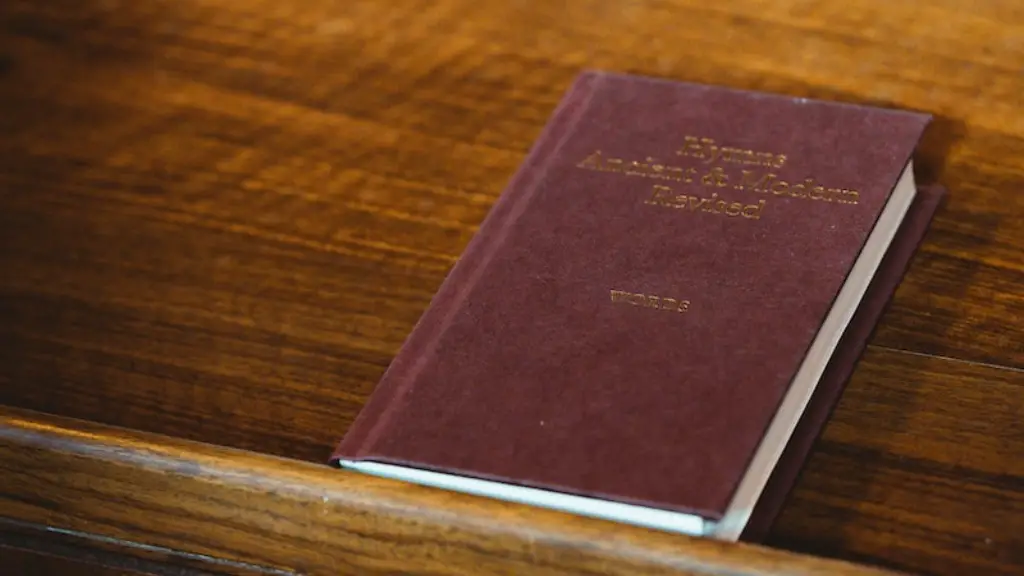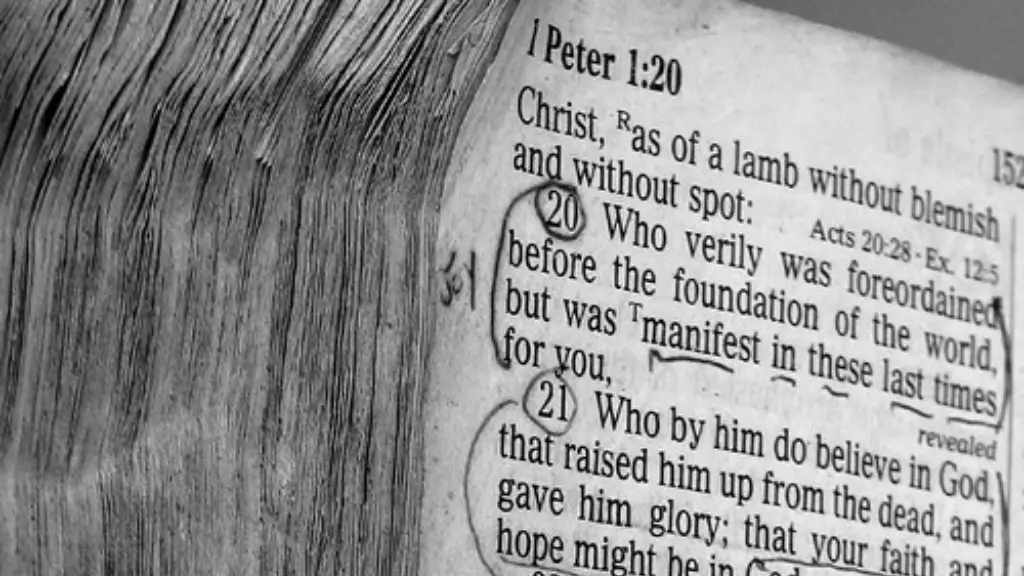The threshing floor in the Bible is a powerful tool for understanding the past, present and future of faith. By examining the significance of this trope, it is possible to appreciate the depths of the biblical story, and to gain new insights into our own spiritual lives.
In the Bible, a threshing floor is the area where wheat and other grains were separated from the chaff. As such, it symbolized an important stage of the ancient agricultural process. After the harvest, it was common for farmers to drive their beasts of burden around the threshing floor, shattering and uprooting the wheat kernels from the chaff. This was then carried away by wind, leaving the wheat kernels to be collected and used for bread and other foods.
Central to this notion is the idea of winnowing, which had a strong spiritual significance for the ancient Israelites. The threshing floor was seen as a place of judgment; it signified that God was separating the faithless from the faithful, the good from the bad.
This is seen in the story of Ruth in the book of Ruth. When she accompanies Naomi, her mother-in-law, to Judah’s threshing floor, she appeals to the family’s mercy and dedication to the faith. It was there, at the threshing floor, that Boaz, the kinsman-redeemer, noticed Ruth, and chose to redeem her and protect her inheritance.
From this, we can see that the threshing floor was a symbol of faithfulness, a reminder to the Israelites – and to us today -that we too will be judged according to our deeds. Those who lead lives of integrity and faithfulness, sowing goodness into the lives of others, will be protected, while those whose deeds are found wanting will be uprooted and rejected.
The threshing floor also serves as a reminder of humility. After all, the ancient farmer drove his animals of burden around the threshing floor, beholden to the nature of his work and the whims of the elements. So too, this motion of the threshing floor serves as a reminder that we should humble ourselves before God and those around us. We cannot separate the good from the bad by our own efforts, but only by the grace and mercy of God.
On a more contemporary level, the threshing floor is also a metaphor for transformation. As the wheat was transformed from grain to bread, so too can we be transformed from sinners to saints. The threshing floor, then, is a place where we can accept and embody the grace of God, and be transformed into a new being of faith and righteousness.
Faith and Redemption
The threshing floor is also a powerful symbol of faith and redemption. Whenever the Israelites encountered hardship and oppression, remembering the threshing floor was a reminder that God was still faithful to their cause and that He was still their redeemer. He would eventually separate the faithful from the faithless, and His judgment would be just.
The story of Ruth carries this message of faithfulness and redemption too. Despite her extreme poverty and her financial dependence on her husband’s family, Ruth was was loyal and obedient. When Naomi returned to Bethlehem, Ruth chose to accompany her and to trust in God’s protection, rather than to turn away in doubt and despair. God, in turn, was faithful to her, sending her a redeemer and the assurance of a brighter future.
For us today, the threshing floor can serve as a reminder of faith and redemption as well. We too are subject to the hardships and anxieties of life, but we can trust that God’s mercy and grace will redeem us. In moments of struggle, we can look to the story of Ruth and seek for courage, for a fortitude of faith, and for an assurance in the faithfulness of God.
Test of Integrity
The threshing floor is also a test of our integrity and dedication. Through the threshing floor, we can recognize the value of loyalty in the midst of adversity. Ruth’s loyalty to her mother-in-law speaks to our own need to remain faithful even in times of difficulty, and to show our trust in God that He will bring about His redemption no matter what.
This test of integrity is crucial for our spiritual development. To be faith-filled, we must strive to show dedication to what we believe, even when it is difficult, holding fast to our beliefs and leaning into our faith in the midst of hardship. The threshing floor reminds us of our need to remain loyal to God, to remain in His presence and cling to Him no matter what.
God’s mercy and grace, however, can be difficult to understand. Especially in times of great suffering or injustice, faith can be hard to bring forth, and what it means to cling to the promises of God can seem like a mystery. Thankfully, the threshing floor gives us a remarkable tool for understanding what faith and redemption can look like.
In this way, the threshing floor can serve as a powerful reminder of our own spiritual journey. When faced with adversity, we can look to Ruth and the threshing floor for courage and strength. By holding fast to the faithfulness of God, we too can be redeemed and changed for the better.
Transformative Power
The transformative power of the threshing floor is one of its most remarkable features. Not only does it symbolize faith and redemption, but it also serves as a reminder of the power of transformation. Just as the grain is changed into bread on the threshing floor, so too can we be changed on our spiritual journey.
This transformation is a gradual process. It is a process of trial and error, of faith and uncertainty. It is through the miraculous workings of God’s grace that we can be transformed into a new person of faith and mercy. As we continually strive to be obedient to God, the transformation can take us closer to moral perfection.
The threshing floor can thus serve as a reminder to us of God’s miraculous power and how it can change us. We too can be redeemed from the depths of sin, and undergo an amazing transformation in our spiritual lives. With humility and trust in God’s promises, we can be changed for the better.
Calls To Action
The threshing floor is a call to action for us today. We are called to trust in God’s faithfulness, to surrender our burdens to Him and to embrace His promises of redemption and transformation. This is no easy feat, and it requires us to stay vigilant in our faith.
Above all else, we must remember that God’s grace and mercy are available to us despite our own shortcomings and failings. As we strive to be better followers of God and better human beings, we can look to the threshing floor for inspiration. We can remember Ruth and her faithfulness, and recognize our own opportunity to be redeemed.
Finally, we must strive to embody the qualities of faith, humility and trustworthiness. These are the values that can turn us from sinners to saints, and as we strive to live out these virtues we can find ourselves being redeemed from every disappointment and difficulty. The threshing floor is a powerful reminder of this transformative power, and it calls us to remain ever faithful in our devotion to God.
Trust and Hope
When we encounter hardship and struggle, the threshing floor reminds us that we can always trust in the power of God’s grace and mercy. It is through our faith, and through the assurance of God’s unfailing love, that we can find the strength to overcome even the deepest of despair.
We are reminded too that, despite the fragility of life, there is hope in the midst of suffering. Through the story of Ruth and the symbolism of the threshing floor, we can gain insight into God’s great promises of redemption and transformation. Even in times of suffering, we can trust in the mercy of God to bring us through, with renewed hope in our hearts.
The threshing floor thus has the power to bring us closer to God and to help us better understand the depths of our faith. By examining its power and significance, we can gain new insight into our own spiritual lives and learn to trust in the promises of God.
Teaching and Example
Finally, the threshing floor can serve as a teaching and an example for us. Through the story of Ruth and the symbolism of the threshing floor, we can learn the importance of faithful dedication and perseverance. We can recognize that, no matter what, God’s grace and mercy are available to us, and that He will never forsake us or reject us.
The threshing floor also guides and instructs us, reminding us of our need for humility and obedience. We can strive for moral perfection, and for the transformation of our hearts, only when we remember the power of faith, the importance of trust and the assurance of God’s redemption. We can learn from Ruth and the threshing floor a lesson in faithfulness, in loyalty and in trust.
The threshing floor in the Bible is as a powerful statue and reminder to us, as believers, of the power of God’s mercy and grace, and of the importance of faithfulness. In moments of hardship and adversity, we can remember the story of Ruth, and turn to the threshing floor for strength and hope. We can strive to remain obedient to God and to cling to Him no matter what, and trust in the transforming power of His grace and mercy.





